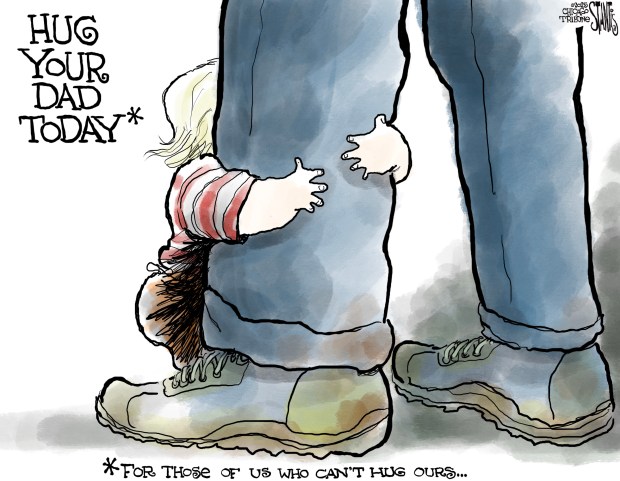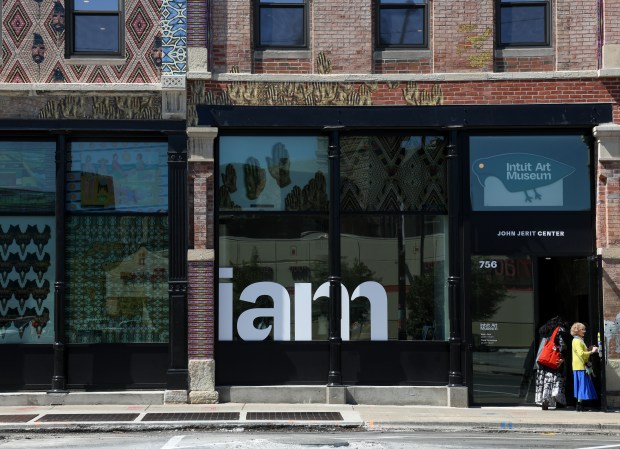If you want to be unpopular in today’s Chicago, argue that the city should do anything whatsoever to smooth the way for automobile drivers.
Bicyclists, public transit entities and pedestrians have passionate advocates, aldermen and even news sources that see cars, whether electric or gas, as dangerous machines that must be tamed at every opportunity. Shrewd words like “calming” have replaced “slowing,” as if all drivers were mavericks on the edge of losing their temper and unleashing havoc.
More importantly, as any driver knows, many Chicago streets that once were mostly two lanes in either direction have been narrowed to one each way and thus even more clogged with traffic. Back in the day, for example, Elston and Milwaukee avenues were fine alternatives to the Kennedy Expressway, but not so much anymore. Major arteries all over the city now are much slower to traverse, and, of course, those car-centric freeways are perpetually under construction.
A lot of car drivers, including those of us on the editorial board, support separate bike lanes, which clearly are much safer. Most of us also love to take public transportation wherever and whenever we can, assuming we can get where we want to go when we need to be there. For those reasons and others, you don’t hear much blowback when driving in the city becomes markedly more difficult. And if you do hear even a timid complaint, the anti-car lobby comes down with all the force it can muster.
Now comes yet another salvo: a blanket citywide speed limit of 25 mph, down from a mostly standard 30. Ald. Daniel La Spata, 1st, chairman of the City Council’s Committee on Pedestrian and Traffic Safety and someone who has shown himself to be unsympathetic when road changes lead to a loss of parking for local businesses, is pushing this idea.
Drivers may well be scratching their heads right now while trying to remember when they last managed to go 30 mph on a busy Chicago street, and some others may well be wondering why the city would focus on deeming it newly illegal for people to do their errands on Roosevelt or Irving Park roads at the scandalous speed of 27 mph, rather than paying more attention to the illegal street racing that goes on around here — often at risk of grievous loss of life or limb.
They might also be wondering how all of this would be enforced. Would cameras be introduced in far more locations, ready to create thousands of new tickets for going 31 mph, given that 6 mph over currently gets you a camera flash and a fine? Would the police have to sit in wait, pulling people over, with all the risks that entails? Would Chicago citizens actually put up with this, especially on some of our wider roads clearly designed for a relatively safe, 30 mph trajectory?
The City Council might do well to look at what happened in Wales. An effort was made there to reduce speed limits to 20 mph on all speed-restricted roads in built-up areas. As is the case in Chicago, the argument was made that slower speeds would save lives, and, indeed, the data does show that lower vehicular speeds mean that more pedestrians survive accidents with automobiles. That’s an immutable fact, although you could extend that argument to, say, 5 mph, which would be safer still. In the real world, this issue, of course, is about reasonable tradeoffs.
In the case of Wales, it was one that 500,000 people said they were not willing to make. That’s roughly the number who signed a massive petition against the despised new law, forcing the government to backtrack. After actually listening to affected citizens, the Welsh government found support for lower speed limits around schools, public housing with lots of kids and hospitals, among other commonsense areas, but not as a blanket prohibition that also applied to safer, wider roads at all times of the day and night. What was the result of the new governmental guidance in this nation with a total population not so different from that of Chicago? It’s now up to local control. As it should have been from the beginning.
We think Chicagoans would likely feel the same. By all means, let’s have a comprehensive review of speed limits and accident rates involving cars with pedestrians and cyclists across the different wards of the city and see if there are locations where reasonable people can agree that 30 mph is too fast for such places. Aldermanic offices are the obvious places to issue an opinion. And we’re all for enforcing the existing speed limits with rigor.
But we don’t need a new blanket ordinance, the enforcement of which would require yet more speed cameras to extract money from the pockets of Chicagoans or yet more police encounters that could turn dangerous. Chicago drivers who are causing problems are usually going a lot more than 30 mph.
Getting on your bike is a fine thing to do, and we’re appreciative of how many of our roads have become safer for pedestrians, especially at our previously daunting major intersections. More of that work should be done, especially on the South and West sides.
But Chicago has some cold winters, and it’s a big city with a public transportation system with major gaps. The reality is that many of us drive, at least some of the time, especially away from the city center. Chicago’s streetscape is far too varied for a blanket prohibition; let each ward decide if they want to make a change.
The Welsh law went into effect last September; some roads this week already are being changed back to 30 mph. Let’s avoid that expensive back-and-forth.
Submit a letter, of no more than 400 words, to the editor here or email letters@chicagotribune.com.




